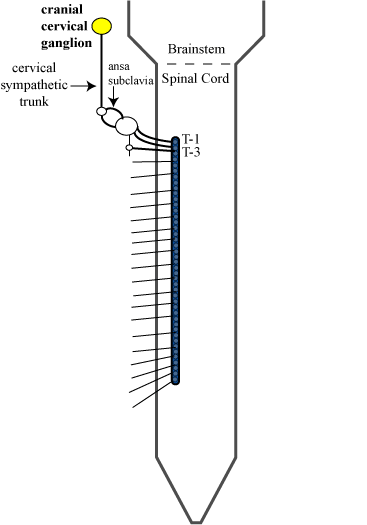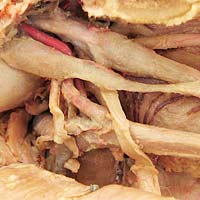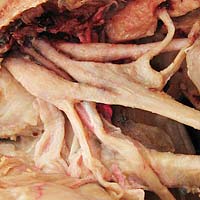| Home Page |
General ANS Features |
Sympathetic Division |
Parasympathetic Division |
Trace Pathways |
Physiology & Pharmacology |
Sympathetic Pathway to the Head

Head
Neck
Body Wall
Thorax
Abdomen
Pelvis |
Origin: most cranial thoracic segments (T1-T3) Preganglionic Pathway: ventral root, spinal nerve, ramus communicans, sympathetic trunk, ansa subclavia, cervical sympathetic trunk Ganglion: cranial cervical ganglion Postganglionic Pathway: internal and external carotid nerve plexuses, continuing plexuses named for particular vessels. Target Organs: pupillary dilator muscle; nasal glands; salivary glands; sweat glands; blood vessel smooth muscle |
Cadaver Images (click to view enlarged) Left. The cranial cervical ganglion is evident rostral to where the cervical sympathetic trunk and vagus nerve are separate from the vagosympathetic trunk. Right. The cranial cervical ganglion can be seen giving rise to the externnal carotid nerve plexus. |
 |
 |
Go Top
